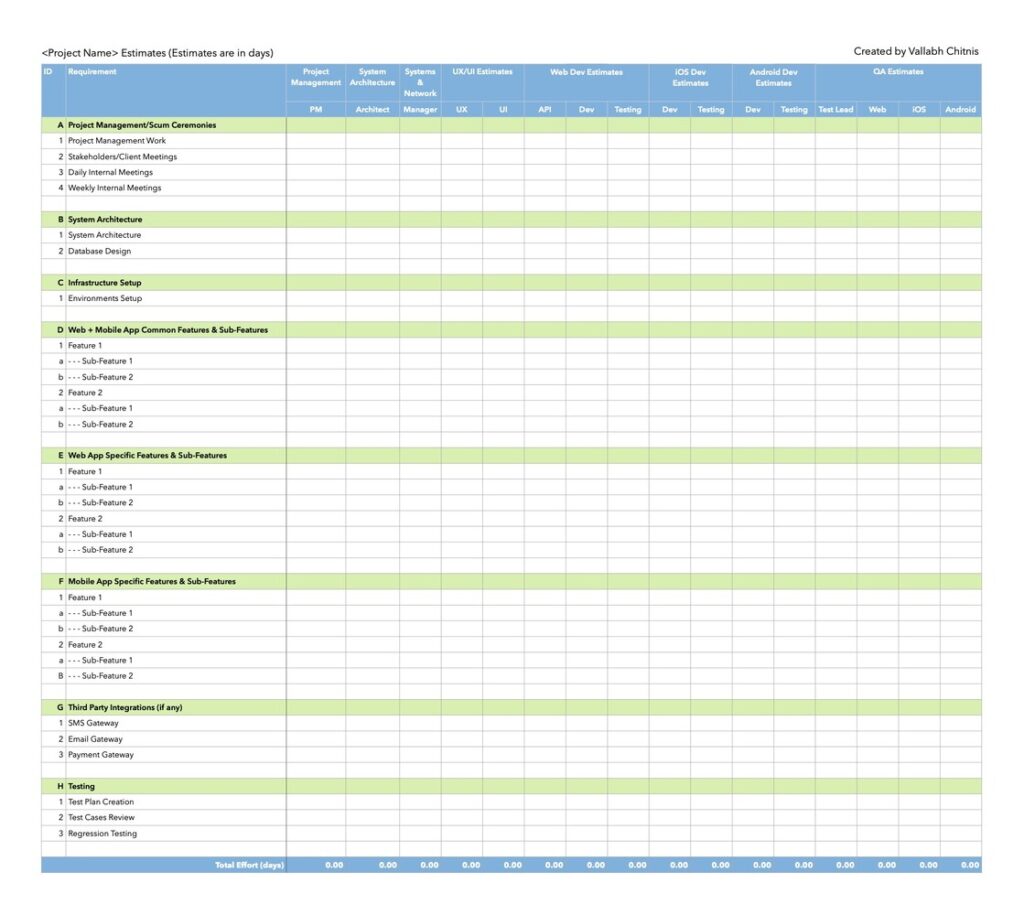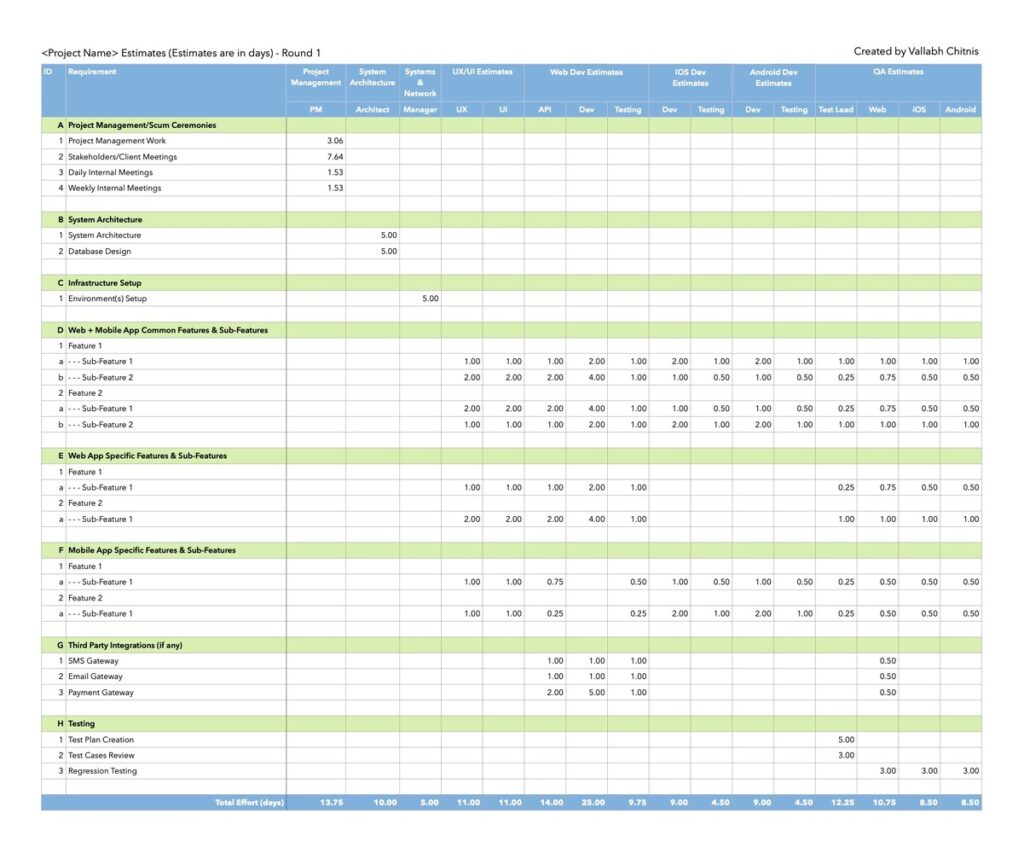This article is a continuation of the article “Driving Product Success: Demystifying Software Estimation Techniques for Product Managers” where I talked about various estimation techniques, their pros, cons, and best suited for project types.
As a product manager, you know how critical accurate software estimation is to drive product success. However, finding the right estimation technique that works for your team and project can be challenging.
In this article, we’ll explore a hybrid approach to software estimation that I have personally used across various projects of all sizes. This technique combines the best elements of various techniques (expert judgment, three-point estimation, agile estimation) to improve accuracy.
Disclaimer: This technique is not one-size-fits-all. Customize it based on your project type, company culture, and available expertise.
Tools required: Excel or similar
Step 1:
Create a set of features and sub-features.
This is the responsibility of the product owner, business analyst, or project manager.
Step 2:
Identify the skill sets and people required for the project. Examples include project managers, architects, UI/UX designers, web developers, iOS developers, Android developers, and quality engineers.
Identify lead-level people who will participate in the estimation process.
Finalize whether estimates will be done in person-days or person-hours. Person-days is preferred.
Step 3:
Conduct a meeting with the entire team to go through the features and sub-features. Clarify any high-level queries that the team may have.
Step 4:
List down the features, sub-features, and skill sets in an Excel sheet. Refer to the template.

Step 5:
Round 1 Estimate
Ask each team member to individually put down estimates for their core area against the sub-features.
Consolidate the estimates in a single worksheet.
This is your first-cut expert-level estimate for each skill.
Ask them to list down the assumptions made.
See the example below.

Step 6:
Round 2 Estimate
Now, ask each team member to individually put down estimates for their non-core areas.
Consolidate the estimates in a workbook.
Ask them to list down the assumptions made.
Thank the entire team for their effort.
The workbook will look like the Round 1 sheet with multiple sheets.
Step 7:
Final Estimate
Depending on the complexity of the feature/sub-feature, decide to do an average, minimum value, or maximum value of the estimates from multiple sheets. (Inspired from Expert Judgement, Three-Point Estimation Techniques)
Another option is to do an average and round to the nearest number in the Fibonacci series. (Inspired from Agile Estimation Technique)
Make finer adjustments based on your prior experience.
Step 8:
Share these final estimates with the team and get their buy-in before sharing them with stakeholders.
Advantages
Uses a combination of core and non-core skill sets of the entire team.
Has a built-in buffer for the unknowns.
No need for a detailed work breakdown structure with tasks and sub-tasks.
Assumptions get documented.
Better accuracy than other techniques.
No herd mentality as everyone does the estimates independently.
Async type of estimation technique.
Can work for small to large-sized projects.
Disadvantages
Features and sub-features if not well defined, can lead to incorrect numbers.
Some interdependencies may be missed.
While the process may seem lengthy, it is efficient due to its async nature.
There are additional variations that can be made depending on the feature and sub-feature clarity and complexity.
To Summarize:
The hybrid approach involves combining elements of various estimation techniques to arrive at a more accurate estimate.
The Excel template provided can be used to list down features, sub-features, and skill sets to simplify the estimation process.
Lead-level people are involved in the estimation process to provide expert-level estimates and ensure that interdependencies are considered.
The technique involves two rounds of estimation, with the first round focused on core areas and the second round focused on non-core areas.
The final estimates are arrived at by considering the complexity of each feature/sub-feature and making finer adjustments based on prior experience.
If you are struggling with project estimation or would like to try this technique, don’t hesitate to reach out. Share your challenges with me, and I will be happy to guide you through the process and customize the technique to your specific needs.
